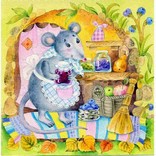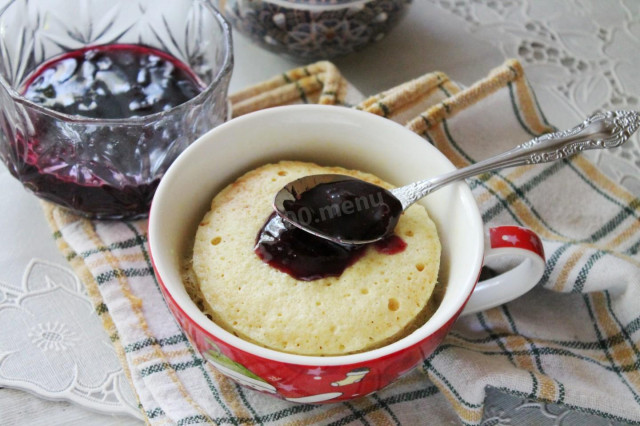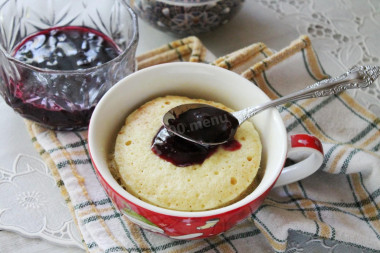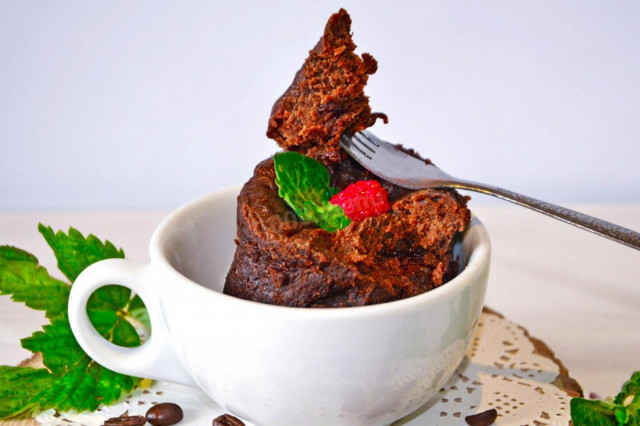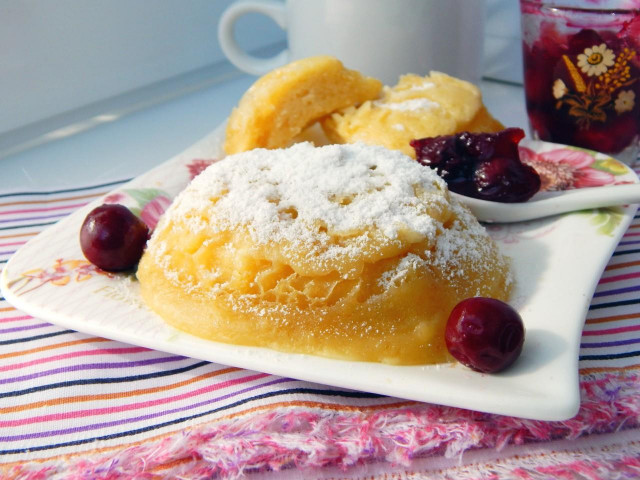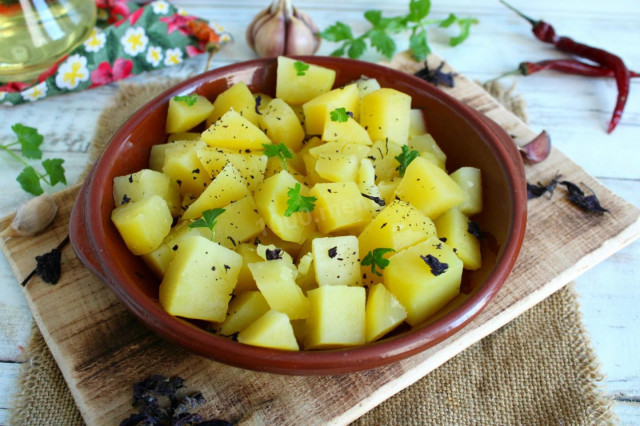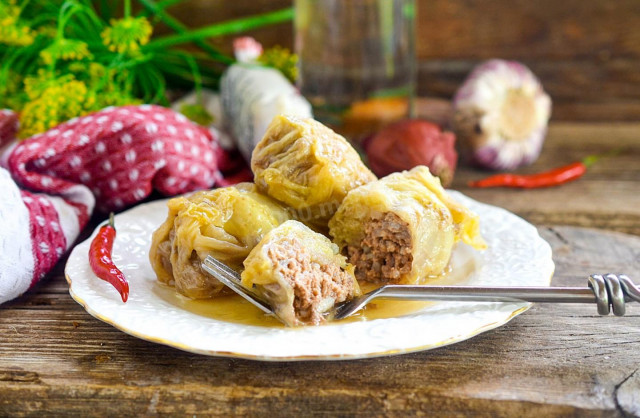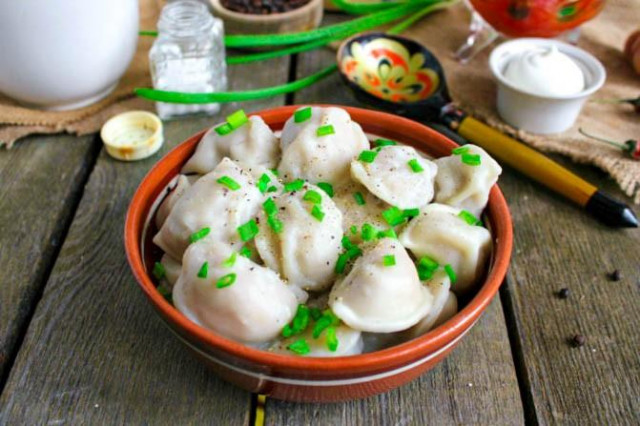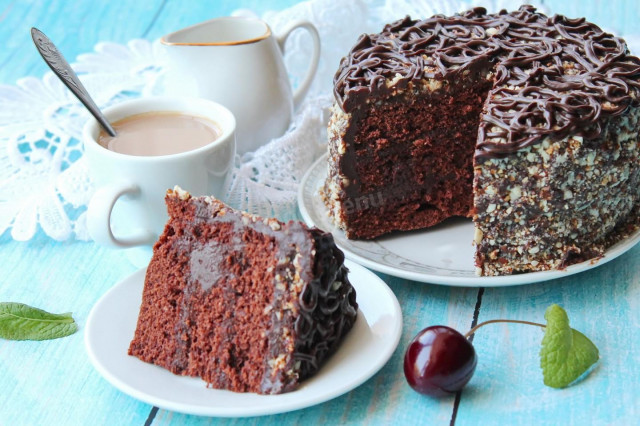Composition / ingredients
Step-by-step cooking
Step 1:
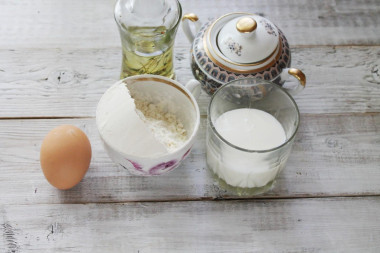
Prepare the products according to the list. Kefir is suitable for any fat content. Take it out of the refrigerator in advance so that it has time to warm up to room temperature. White sugar can be replaced with cane sugar. Then the pastries will acquire caramel notes in taste and aroma.
Step 2:
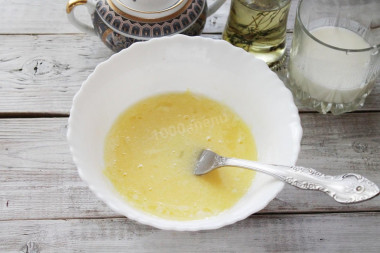
In a container, whisk an egg with sugar with a whisk. Pour in kefir and refined vegetable oil. Stir the mixture so that the sugar crystals completely dissolve. Instead of sugar, you can take a sweetener that is not afraid of heat treatment.
Step 3:
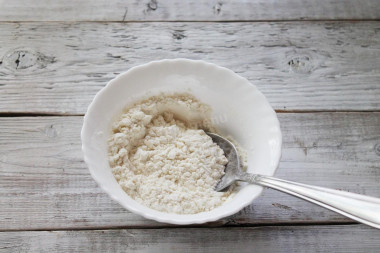
Sift the flour to saturate it with oxygen and the cupcakes turned out lush. Keep in mind that the amount of flour may need to be added more or, conversely, less. Everything will depend on its properties. Separately mix the baking powder with a small amount of flour and add it to the egg mixture, so it will be better distributed over the dough. You can replace it with baking soda (1 tsp. l.), extinguished with 3% vinegar (1 tbsp. l.).
Step 4:
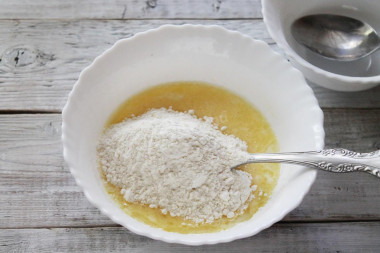
Pour in the vanilla (on the tip of the knife) or replace it with vanilla sugar (according to the instructions). Add ground cinnamon (about 1 tsp. l.) if desired. Be careful with the dosage of vanilla and cinnamon. If you pour them more than required, the taste will be bitter. Combine both mixtures: liquid, kefir and eggs, and dry (flour and baking powder).
Step 5:

Mix the dough well until smooth. If required, add a little flour, achieving the desired consistency. The dough should be smooth, without lumps, like thick sour cream.
Step 6:
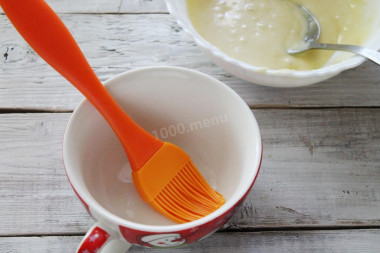
Lightly lubricate the mug with vegetable oil with a high smoking temperature. Which mugs can be used for cooking in the microwave? Ceramic mugs will do, but without gold patterns. It is important that there are no chips and cracks on them, otherwise such dishes may burst when heated. It is also possible to use containers made of heat-resistant thick glass.
Step 7:
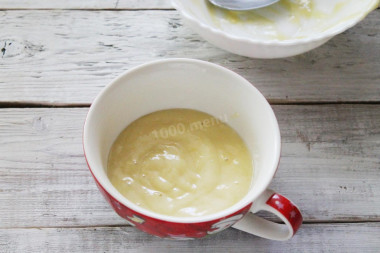
When baking, the product will increase in size by about 2 times, so fill the cup with dough by no more than a third, otherwise it will "run away".
Step 8:
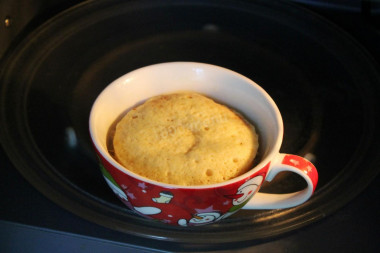
Put the container in the microwave. Turn on the maximum power. Please note that the time may vary for different microwaves. Therefore, I advise you to bake a trial portion first in order to adjust the baking time if necessary. Cook for about 1 minute. First, the mixture boils, begins to grow, then settles a little and seizes. The main thing here is not to overdo baking in the microwave, otherwise it will burn and become rubbery.
Baking in the microwave was cooked for the first time. The first portion inside turned out to be burnt, the second one was very tasty. So listen to your microwave!
Cupcakes can be served with a scoop of vanilla ice cream or just for tea or coffee.
Before serving, sprinkle the cooled delicacy with powdered sugar, sifting it through a fine strainer. Or pour melted bitter chocolate. You can also decorate with fresh berries or slices of fruit.
If you are a lover of chocolate flavor, pour cocoa powder into the dough (about 1-2 tablespoons).
You can also add roasted walnuts in a dry pan, and then chopped walnuts.
Be prepared for the fact that flour may need a little more or less than indicated in the recipe. You need to focus on how the dough should turn out (dense, soft, liquid, etc.). There is a lot of useful information about why flour, even of the same variety, can have completely different properties, read this article
Caloric content of the products possible in the composition of the dish
- Chicken egg - 157 kcal/100g
- Egg white - 45 kcal/100g
- Egg powder - 542 kcal/100g
- Egg yolk - 352 kcal/100g
- Ostrich egg - 118 kcal/100g
- Granulated sugar - 398 kcal/100g
- Sugar - 398 kcal/100g
- Kefir fat - 62 kcal/100g
- Kefir of 1% fat content - 38 kcal/100g
- Low-fat kefir - 30 kcal/100g
- Kefir "doctor beefy" 1,8% fat content - 45 kcal/100g
- Kefir 2.5% fat content - 53 kcal/100g
- Vegetable oil - 873 kcal/100g
- Wheat flour - 325 kcal/100g
- Baking powder - 79 kcal/100g
